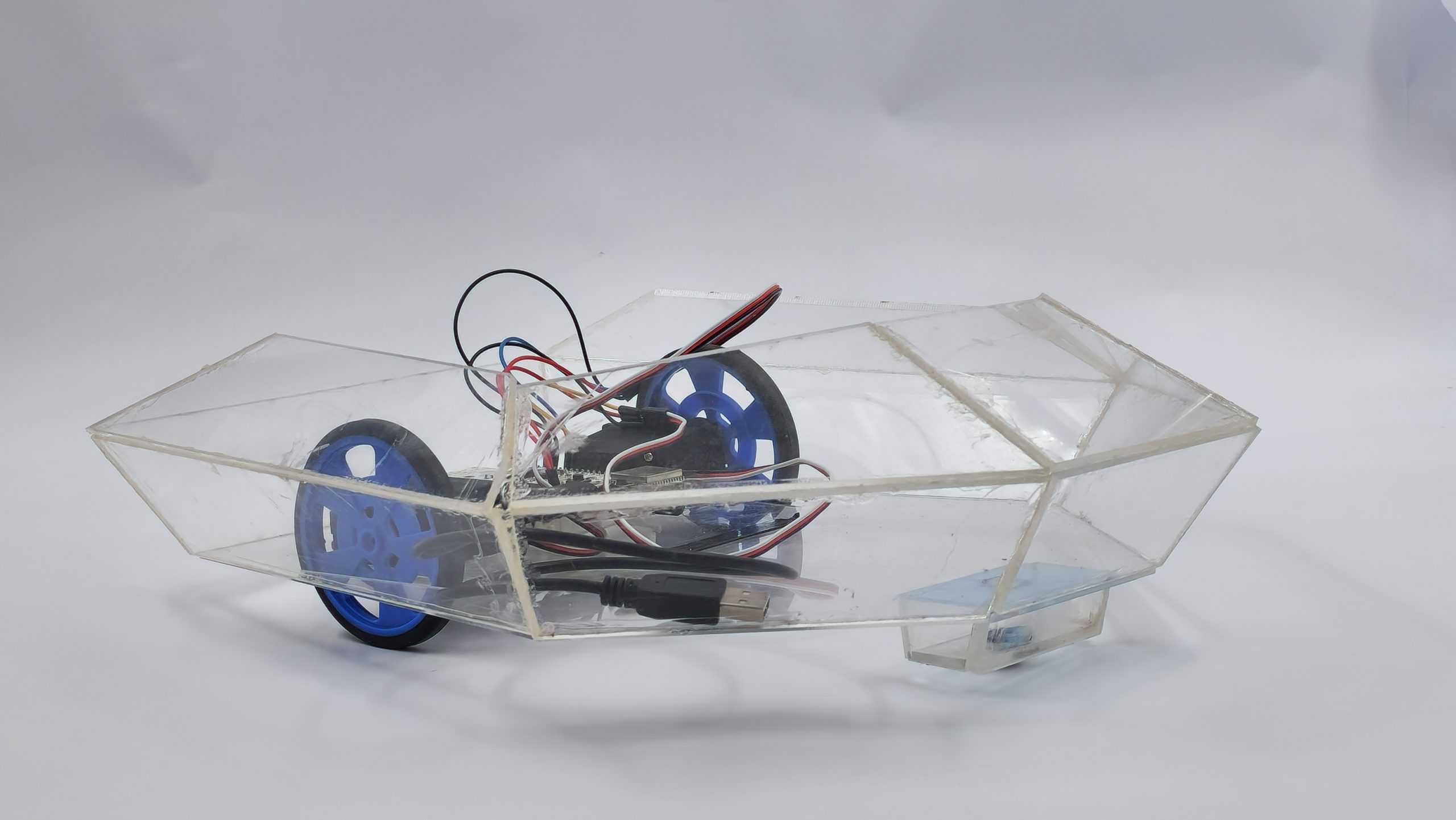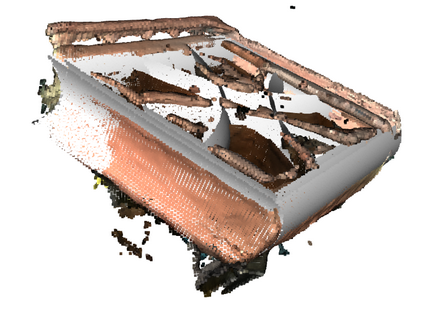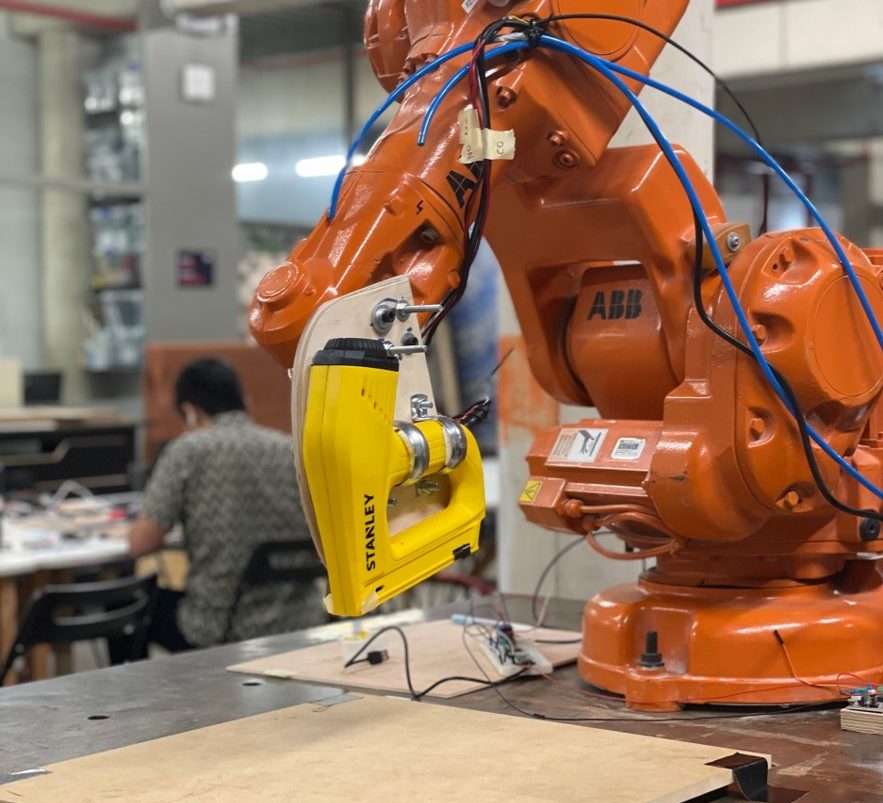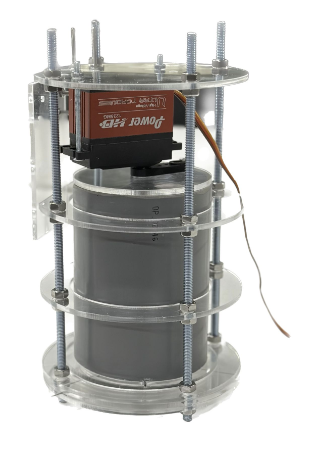The Master in Robotics and Advanced Construction (MRAC) seeks to train a new generation of interdisciplinary professionals who are capable of facing our growing need for a more sustainable and optimised construction ecosystem. The Master is focused on the emerging design and market opportunities arising from novel robotic and advanced manufacturing systems.
Through a mixture of seminars, workshops, and studio projects, the master programme challenges the traditional processes in the Construction Sector. It investigates how advances in robotics and digital fabrication tools change the way we build and develop processes and design tools for such new production methods.
IMPACT ROULLETE
The objective of this project is to expand the capabilities of specific robotic processes in additive manufacturing, known as impact printing, Impact Printing, a novel additive manufacturing Robotic technique that consolidates pliable soft particles through a robotic shooting process. The cohesion among these soft particles arises from the conversion of kinetic energy, acquired during acceleration, … Read more
Code Cargo
Brief Intending to improve productivity, our focus fell upon the constraints of robot arms. The bounding area of limitation is a reoccurring issue when working with machines, as the area of reach is defined by the physical limitations of the physical components. In this blog, we investigate a solution to increase the range reach for … Read more
Visualising Genres: Investigating the Combination of Acoustics and Art in Multi-Material 3D Printed Walls
Brief Our curiosity brought us to an intriguing investigation at the nexus of technology, craftsmanship, and acoustics in the quest to elevate spatial design. This blog shares the story of our journey, where we used a cutting-edge multi-material 3D printing technique to produce personalized sound-diffusing walls—a first for the industry. Our concept began with a … Read more
Scanning to compare clay bricks: Digital vs Real
In this course we learned about the Robotic Operating System (ROS) and the MoveIt motion planning using Python for controlling robots. We also utilized development tools such as Git and Docker for managing the data. We learned about different types of sensors which helped for the robot’s motion visualization and scanning for the purpose of … Read more
Computer vision and AI in the Additive Manufacturing process
How can we improve the additive manufacturing process? According to a panel of experts, this process is not perfect. There are several issues on it, like the time that they normally spend prototyping to have “the perfect piece”. This involves different parameters like speed, pressure, Material Consistency, the calibration of the robot, etc. In most … Read more
Limitearth Project
The annual construction waste is expected to reach 2.2 billion tons gobally by 2025, to try to solve this kind of problems in this sector we can use the Additive Manufacturing fot the optimization of Fabrication and construction. Key advantages of AM By 2020, the AM sector will grow up to a €13.4 billion industry … Read more
Stapler of Art
A Stapler Gun End Effector Description The project aims to deal with art in new different techniques that keeps up with the technology by getting the best of the robotic arm in a way to create staple art pieces that can achieve new ways of art depending on the robots. The main idea evolved around … Read more
A Canadian tried to make a pizza…
Robotics in food manufacture Exercise Create a moving end effector to be installed on the ABB arm robot using the actuators and electronic components reviewed in class. Inspiration Inspiration for this device stemmed from the integration of robots in the food industry. Additional inspiration was drawn from the Latching End Effector (LEE) on the Canadarm. … Read more










